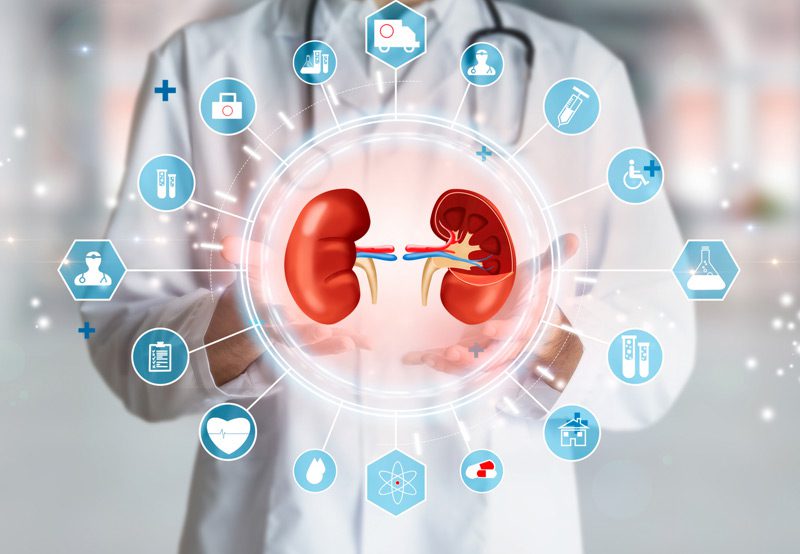

Neurogenic bladder disorder treatment options include conservative medical management, bulking agents, Botox injections, and bladder reconstruction.
Diagnosis
To determine whether a patient has a neurogenic bladder disorder, the physician will conduct a physical exam and check the patient’s brain, spinal cord, and bladder. The patient’s medical history will also be reviewed. Other diagnostic tests may include:
- X-rays of the skull and spine
- Imaging tests of the bladder and ureters
- Ultrasound (sonography)
- Cystoscopy
- Urodynamic tests

Conservative Medical Management
Patients diagnosed with a neurogenic bladder disorder often begin treatment with conservative medical management. This may consist of either intermittent or continuous catheterization to drain the bladder.
Intermittent catheterization is the periodic insertion of a catheter to drain the bladder; this is the primary treatment for a patient unable to fully empty their bladder.
Patients suffering from complete incontinence will need continuous catheterization, which is when a catheter is connected to a drainage bag.
Medication may also be prescribed to improve bladder function.
Bulking Agents
A bulking agent injection may be done to strengthen the urethra and eliminate unwanted effects caused by stress urinary incontinence. Bulking agents have a long history of success in treating urologic conditions. This treatment may be used in combination with other therapies to maximize effectiveness.
Botox Injections
Botox, (botulinum toxin) injections may be done to treat neurogenic bladder disorders. The toxin paralyzes the bladder muscles and helps relieve symptoms. The best candidates for these injections are patients diagnosed with severe forms of overactive bladder. Patients who haven’t seen significant improvement from other therapies may also benefit from Botox injections.
Patients should see results around seven to 10 days after injection. Depending on the amount of toxin injected, results can last from 6 to 12 months, and even longer in some cases.
Bladder Reconstruction
Neobladder reconstruction is a surgical procedure done to construct a new bladder.
If the patient’s bladder is no longer working properly or has been removed to treat another condition, they need a new way for urine to exit the body (urinary diversion). Neobladder reconstruction is one procedure that creates urinary diversion.
During surgery, the surgeon uses a piece of intestine to create a new bladder. The new bladder allows the patient to urinate voluntarily and control when they urinate.
The surgeon will take the following steps during a neobladder reconstruction:
- Remove the poorly-functioning or diseased bladder
- Separate a portion of the large intestine, small intestine, or parts of both
- Reshape intestinal tissue into a spherical bladder
- Place the new bladder in the same location as the original bladder
- Attach the new bladder to the ureters
- Attach the new bladder to the tube that controls the release of urine from the body (urethra)
- Repair the intestines
- Place a temporary catheter in the urethra for draining the bladder during recovery
A continent urinary diversion is an internal pouch made to hold urine. During surgery, the surgeon makes a new opening called a stoma in the patient’s abdomen for the urine to pass through.
This method for collecting urine allows the patient to control when they release urine. Patients don’t need to wear a bag to collect urine, as they would after a urostomy. Instead, they pass a thin tube (catheter) into the stoma to pass urine.

